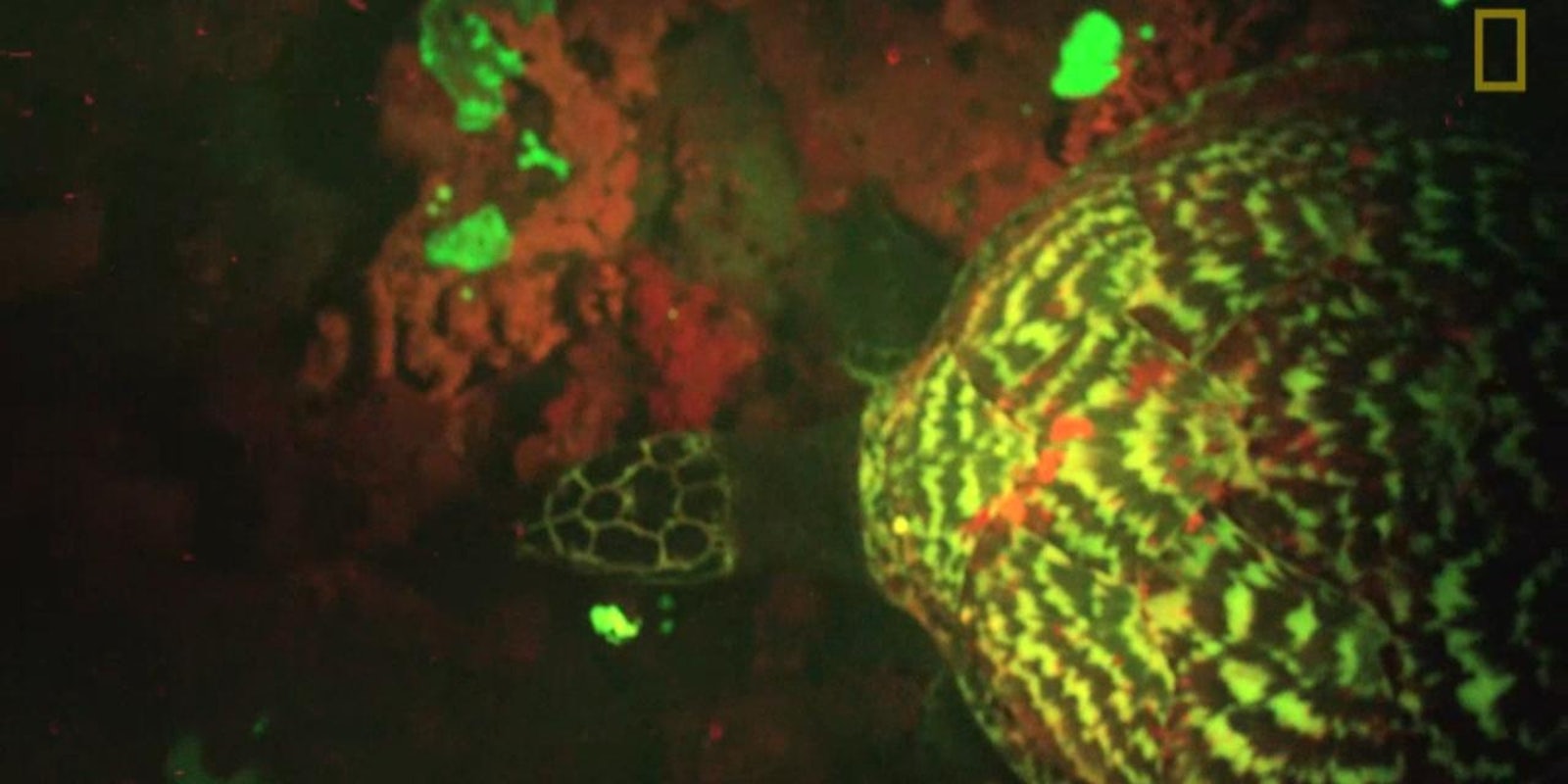Marine biologists have discovered that a critically endangered species of turtle has an unusual capability: biofluorescence.
Biofluorescence is the ability to reflect blue light into different colors, such as red and green. It’s different from bioluminescence, which occurs when creatures create their own light through a chemical reaction.
Though biologists only started studying biofluorescence about a decade ago, they’ve found that it’s incredibly common in small critters like algae and plankton as well as fish. But before now, it was never known to be in the reptilian repertoire of neat animal tricks.
National Geographic broke the story with some amazing footage of the turtle in question:
The hawksbill turtle’s ability was discovered off the coast of the Solomon Islands near Papua New Guinea. Marine biologists David Gruber and Alexander Gaos told National Geographic they happened upon the turtle while doing a regular night dive. They’re not sure why this turtle may possess biofluorescence—other species typically use it to communicate with one another or, believe it or not, to blend in.
Corals are often biofluorescent, Gaos told National Geographic, so the turtle may have fluorescence to blend in with its environment. However, it’s simply too soon to say for sure.
Gruber told the Daily Dot that after discovering the hawksbill’s fluorescent capabilities, he took a closer look at the loggerhead turtle and found it was able to fluoresce as well. He said the next steps will be to look at the turtle’s eyes to see if they can see the fluorescent colors. He also said he’ll be looking into the chemistry of what is causing the fluorescence.
“It is very exciting, as sea turtles live in a blue ocean, which is the perfect light environment to excite the fluorescent molecules and cause them to give off light in other colors,” Gruber said. “We are finding biofluorescent marine life to be much more widespread than we ever imagined.”
Screengrab via National Geographic


